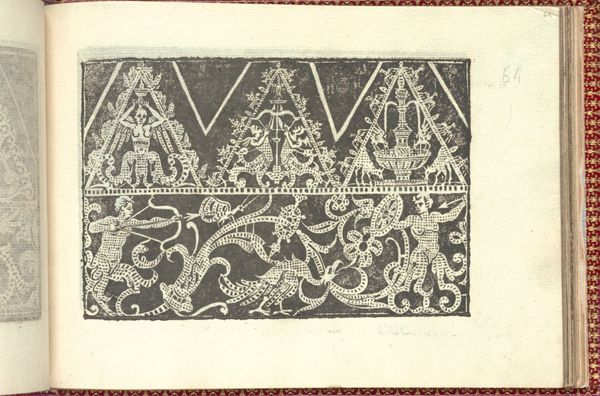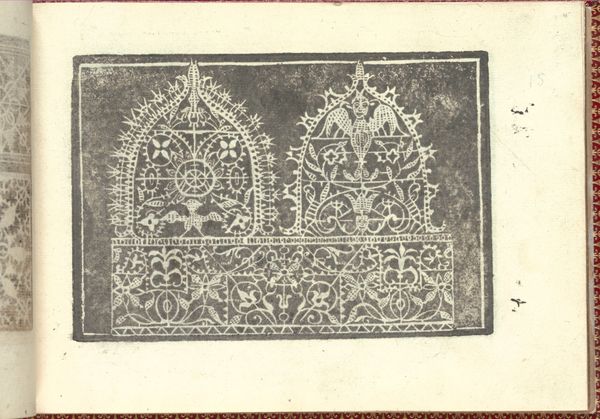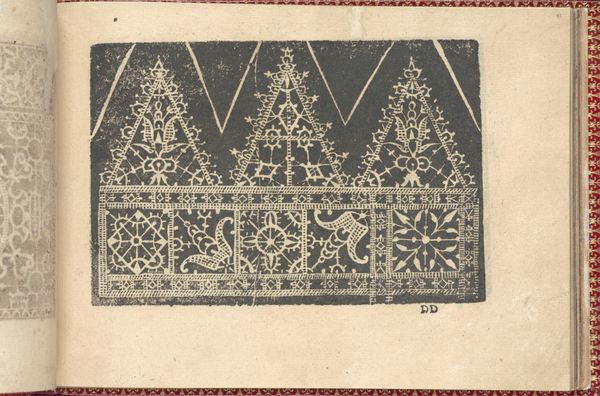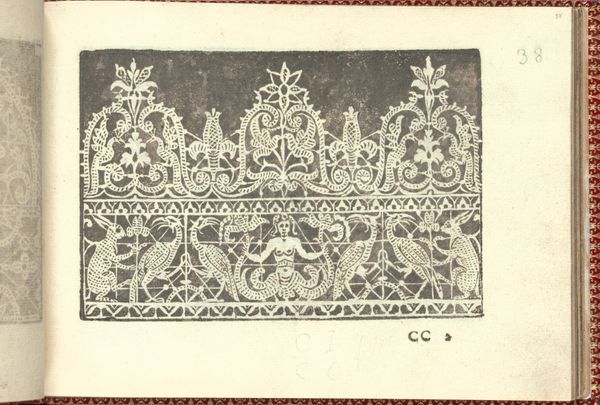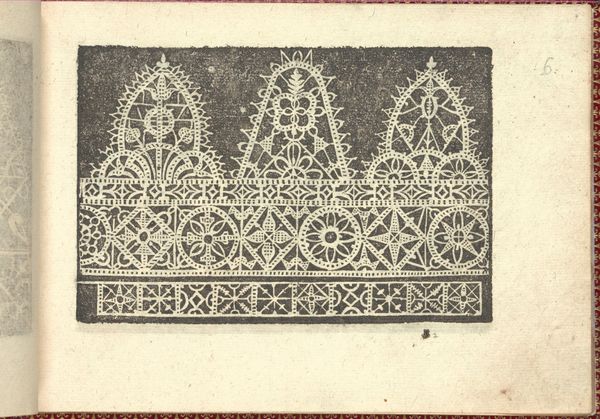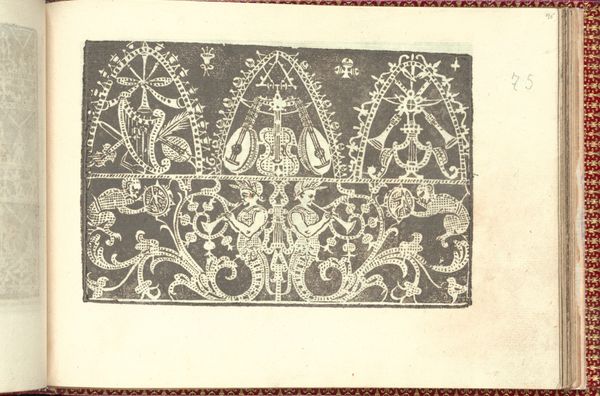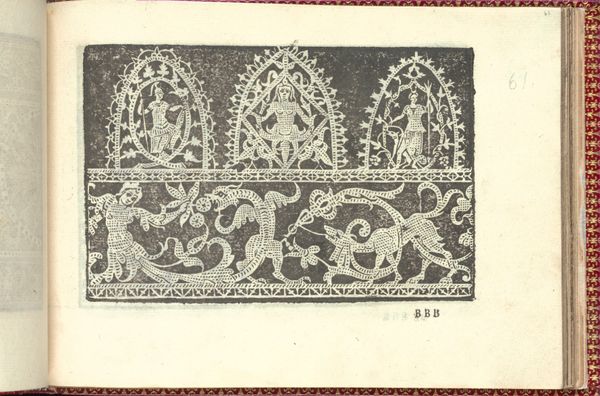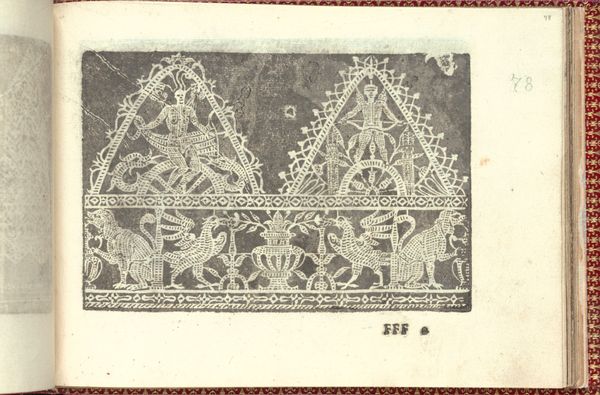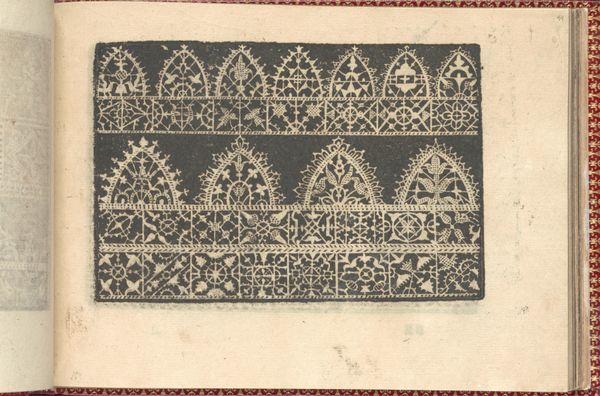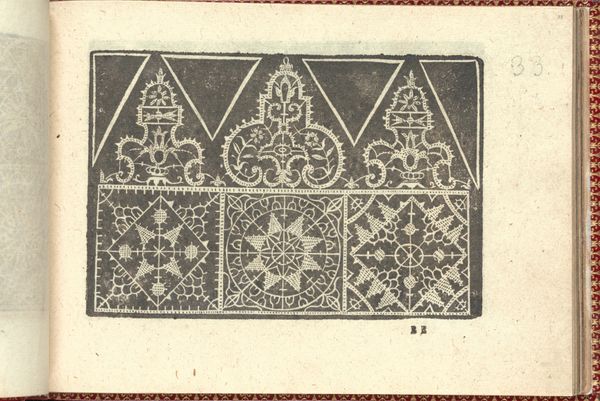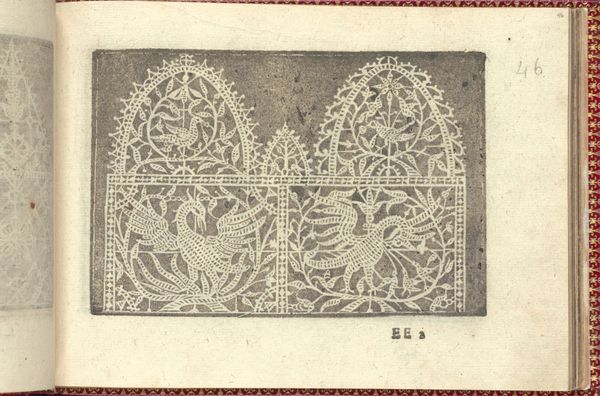
Corona delle Nobili et Virtuose Donne: Libro I-IV, page 13 (recto) 1601
0:00
0:00
drawing, print, woodcut, engraving
#
drawing
# print
#
book
#
bird
#
personal sketchbook
#
woodcut
#
line
#
italian-renaissance
#
engraving
Dimensions: Overall: 5 1/2 x 7 11/16 in. (14 x 19.5 cm)
Copyright: Public Domain
Curator: So, here we have page 13 from Cesare Vecellio's "Corona delle Nobili et Virtuose Donne: Libro I-IV," a book dating back to 1601. It's an engraving and woodcut, showcasing line art. What springs to mind when you see it? Editor: You know, it feels a little like staring into an ornate kaleidoscope. So much intricate detail, these almost architectural birds and botanicals rendered in stark monochrome. There’s a kind of restrained chaos to it that’s oddly captivating. Curator: That feeling of "restrained chaos" is interesting. Considering its creation during the Italian Renaissance, and the book's focus on noble women, might we also read the detail and order within its frame as a representation of prescribed social roles of nobility? It offers visual strategies to discuss feminine identity. Editor: Hmmm, prescribed roles... I get that, but I also wonder if that kaleidoscope feeling isn’t also reflective of Vecellio’s mind at work. I mean, look at the variations of birds, each slightly different but echoing one another—almost as if he was doodling variations, thinking aloud through imagery. Do you suppose it shows that sense of constant evolution that is inherent in creativity? Curator: That’s a valid perspective. Vecellio's other books explored global attire and cultural representations, which involved a study of varying roles and representations. But this image does highlight questions on feminine identity, and its rigid geometric pattern can show how women's role might have been limited to the art's elite during that era. Editor: I see what you mean about the limiting factors. And yet, there's a rebelliousness, too—or maybe I'm just projecting? Those stylized birds feel on the verge of taking flight. It's this mix of freedom and restraint, the meticulous rendering married with the suggestion of movement, that draws me in. The more I observe, the less rigid it feels. Curator: The dialectic between order and a need for social disruption could coexist, right? Maybe our interpretations are more alike than previously thought. Thank you for making me notice Vecellio’s use of negative space and dynamic tension as an invitation for resistance within visual pleasure. Editor: Ah, the visual pleasure, you see? The pleasure. It can exist even amid limitation. Now that's something that women of all ages understand...even today.
Comments
No comments
Be the first to comment and join the conversation on the ultimate creative platform.
